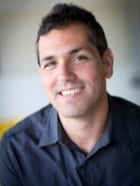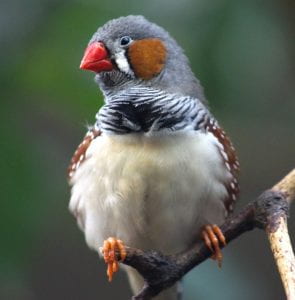“…It was eyebrow-raising: how much grit is required. There are so many rejections behind every success…”
 An interview with Jesse Goldberg, MD, PhD
An interview with Jesse Goldberg, MD, PhD
Department of Neurobiology and Behavior, Cornell University
By Michelle Johnson (10/4/19)
How did you first get interested in science?
I had a blood disease when I was in fifth grade, and it took me out of school for a year. It was idiopathic thrombocytopenic purpura, a platelet disorder, and I had a private tutor that the County provided me. She was amazing, and she had me do a project on what my disease was; I had to learn about the different types of blood cells, platelets, white blood cells and red blood cells. I remember I had a doctor who explained the disease to me that there were good cells in my body that are meant to be attacking bad cells, but they were accidentally attacking other good cells. I just remember thinking to myself, “There are these agents inside my body that I’m unaware of that are making me bruise.” It was mind-boggling for me. That was when I was first realized that there are parts of ourselves that we’re not conscious of—it’s just the very tip of the iceberg of what the body is and where our behavior comes from. That’s when I first got into science.
What research questions are at the forefront of your mind right now?
My lab has three research directions, but they’re all unified through the question, what’s the neural basis of learned behavior and, specifically, motor learning? [This isn’t] because I was so interested in movement, but because you can measure animal movements very well [compared to] what animals are thinking about. We study this question in songbirds as they learn to sing: as babies they babble, and then they gradually get better with practice, at least zebra finches, to copy the memory of a tutor song.

It’s a trial-and-error learning process that mimics some aspects of trial-and-error learning in humans, and it non-coincidentally involves the same brain pathways, including basal ganglia circuits that are associated with all sorts of neuropsychiatric diseases. Songbirds [are unique because] when they get better with practice, they do it on the basis of comparing their behavior to some internal goal, whereas in most studies of motor learning in primates or rodents, [the animal] learns something to get a reward or to avoid punishment.
Some of our work shows that you can take parts of limbic system [in the brain] and study them in a songbird, and you see that these circuits can impose valence on performance errors. A bird can have a better than expected song outcome or a worse than expected song outcome, and you can see signals in the brain that discharge the same way they would if there was a thirsty monkey either getting juice or not getting the juice that [the monkey] thought it was going to get.
What has surprised you about working in this field?
It wasn’t surprising, it wasn’t disappointing, but it was eyebrow-raising: how much grit is required. There are so many rejections behind every success or apparent success. I think a lot of students look at people who just got a grant or just published a big paper, and they just see that, they don’t think, “Oh, this person also has a graveyard of dozens of grants that didn’t get funded and papers that got rejected.” It’s not that there’s any injustice in this, it’s part of the process. When a bird learns to sing, a lot of the syllables that come out aren’t very high quality.
The process of trial-and-error learning requires that things not work out. It’s good to go into what you’re doing not expecting everything to pan out. It can be emotionally very difficult—I still get emotional stings when something gets rejected. It used to be intense and it used to last a week or two, and now it’s intense and lasts 15 minutes. What happens with experience is not that the intensity of it declines, but rather than absorbing the full weight of it for a long period of time.
Click here to learn more about Dr. Goldberg and his work.
Click here to go back to the “Interviews with Scientists” page.
